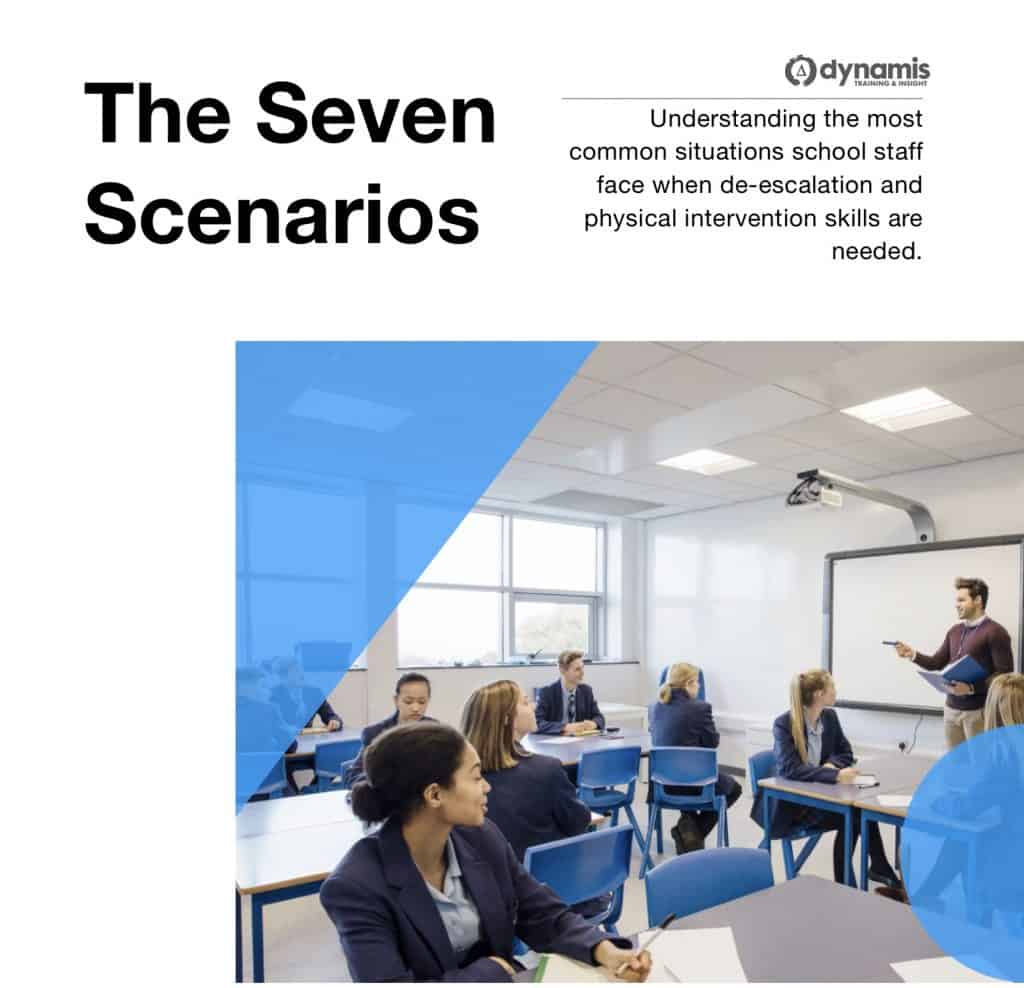Positive Handling Verbal Deescalation
You may remember in my last post about Positive Handling Number 5, we looked at a stuation whereby a disruptive child was resolutely refusing to leave a classroom?
“You cant’ make me! I know my rights! You’re not allowed to touch me!”
How did we get here? In my previous post, I discussed how a set of values (known as the Five Maxims in Verbal Defense and Influence) can help to establish a Non-Escalatory environment in a classroom and across a whole school.
Where the gateways to poor behaviour are carefully guarded by those skilled in using words to create voluntary compliance, cooperation or (ideally) collaboration, then we should rarely end up with the mexican stand-off described above – with teaching staff considering last-resort physical interventions while the child plays brinkmanship.
Our Positive Handling Verbal Deescalation methodology’s Persuasion Sequence can be an extremely helpful framework for dealing with this kind of situation, especially if one of the possible outcomes is that there will be a physical intervention required to safely resolve it.
Step One: Make the Request
Remember, we don’t tell people what to do by issuing commands! With this, you are going to firmly request, using specifically crafted language, that the child collaborate with you, cooperate with you or simply comply with your request for order or for safety.
Step Two: Tell them WHY
Children who don’t know why you are asking them to do something (especially if it is a discipline-related request, like leaving a classroom) are likely to quickly decide that you are asking them because you don’t like them, or don’t respect them, or otherwise ‘have it in’ for them. By carefully setting the context of your request – and in our methodology we do this using a three-part formula to make sure we do it properly – you prevent them from going down that particularly negative path.
Step Three: Give them options
Most professionals I meet are extremely practiced at giving options, however they aren’t always so good at presenting BOTH the negative and the positive options for the child. Both types of options are important as they act as counter-balancing weights in the decision the person is going to make – to comply and cooperate, or not. Typically in nice environments, the professionals offer lots of positive options in an array of hopeful choice-giving. In the tougher environments, the professionals know the code of conduct and behaviour policy inside out and quote chapter and verse in a powerful display of The Rules and Sanctions. A blend is likely what is called for.
Step Four: Offer them a 2nd Chance
Most of us, with time and hindsight, would go back and change decisions we made, especially the ones we made in the heat of the moment when we said something we didn’t mean or couldn’t let ourselves compromise when we should have. This step is a reflection of this understanding and strums a note of fairness in the interaction – it hands the navigation of this interaction over to the subject and indirectly says “Okay you’re driving for a moment – where do you want to take this?”
Step Five: Take Appropriate Action
Up to this point, our Persuasion Sequence should have steered you and the child into some point of compromise or voluntary compliance, where needs were expressed and courses of action decided. However it may not have worked. Sometimes, despite our best efforts as contact professionals, we end up in places we would rather not, having to take actions which impact on the child. You have to call in the ‘heavy guns’ of SLT or you and your colleague have to follow-through with a physical intervention.
The power of this Positive Handling Verbal Deescalation structure is that it allows the Contact Professional (the Teacher or Deputy-Head or LSA for example), if they have reached the final stage, to say:
- I had a structured interaction with the child
- The structure I followed shows the child respect at each stage
- We moved through each stage because the child was driving certain choices
- At several points, I checked comprehension and offered options for good outcomes
- I only ended up at stage five (“as a last resort”) because all the others failed
- By working through the sequence this way, I maintained professional detachment and composure, especially in front of the other children
- When the child reviews the incident afterwards, they are likely to feel that the process was fair and reasonable, because of its structure
- Next time, when I Tell them WHY and Offer Options, my words may have more impact
- I am consistent in how I deal with resistance and non-cooperative behaviour
- My interactions are values-based
When I teach this Positive Handling Verbal Deescalation sequence, I offer time-tested and well-conceived language and phraseology from Verbal Defense and Influence which invigorates the sequence with the right tone and quality for achieving its goal: voluntary collaboration, co-operation or compliance and the maintenance of healthy relationships between teaching staff and the children in their care.
———————————————-
Gerard O’Dea is a conflict management, personal safety and physical interventions training consultant who teaches Positive Handling Verbal Deescalation strategies on a daily basis. He is the training director for Dynamis, a specialist in personal safety and violence reduction initiatives and the European Adviser for ‘Verbal Defense and Influence’, a global programme which addresses the spectrum of human conflict. www.dynamis.training




